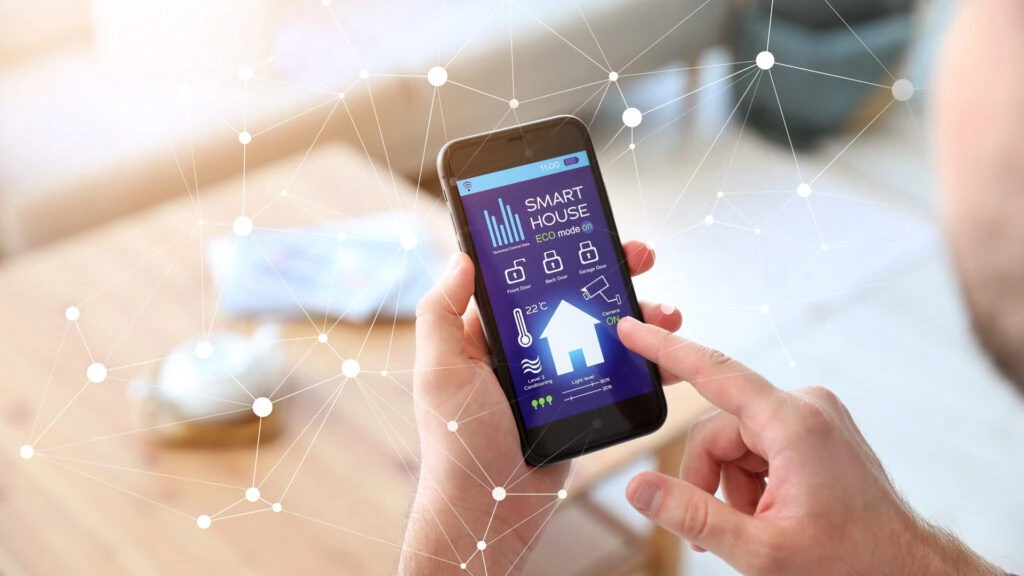While early smart home gadgets were often isolated gimmicks, 2025 will see a fundamental change: 78% of households report measurable improvements in comfort, energy efficiency and security thanks to networked devices.
The key lies in the intelligent integration of various smart home systems.
The new smart home reality: when the home thinks for itself
By 2025, the Internet of Things will have evolved from technical gadgets to an indispensable part of modern living. Market researchers report that the number of connected devices in German households increased by 67% between 2021 and 2024. This dramatic increase reflects a fundamental change: modern smart homes are no longer just collections of individual gadgets, but intelligent ecosystems that combine AI-supported automation with intuitive operation.
The new generation of smart home systems is based on three revolutionary pillars. Predictive intelligence enables the home to learn your habits and act with foresight – the heating starts automatically before you leave work, the lights dim at bedtime. Seamless Integration seamlessly connects different devices so that a single voice command triggers an entire chain of actions.
Adaptive learning ensures that the system continuously adapts to your lifestyle and saves energy in the process.
This architecture enables residents to experience their home not as a collection of different apps, but as an intelligent system. A real-life example: the Müller family from Munich were able to reduce their energy costs by 35% by networking their heating, lighting and blinds, while at the same time significantly increasing living comfort. “Our house now knows when we’re coming home and prepares everything – perfect temperature, pleasant lighting and our favorite music is already playing,” reports Mr. Müller.
Everyday revolution: tangible benefits for consumers
The days of vague smart home promises are over. Consumers now expect measurable improvements to their everyday lives, and modern IoT systems deliver these in impressive fashion. Recent studies show that 78% of smart home users experience concrete improvements in at least three areas of their lives: Convenience, security and cost savings.
The path to a smart home: a systematic approach for beginners
Developing a smart home requires a well-thought-out approach that takes both technical and personal factors into account. Successful smart home owners follow a systematic ten-step process that begins with a clear definition of their living needs and ends with the optimal use of all functions.
The first critical step is to precisely identify the areas of life that need to be improved. Many smart home projects fail because they are technology-driven rather than needs-oriented. Successful implementations start with the honest question: What daily challenges in my home do I want to solve? Is it about more convenience in everyday life, increased security for the family, energy cost savings or better entertainment options?
Budget planning forms the basis for realistic expectations. Smart home solutions are available for every budget, from 200 euro entry-level systems to 10,000 euro complete solutions. You should not only consider the purchase costs, but also plan for ongoing expenses for apps, cloud services and occasional device updates. A proven approach is to invest gradually over several years, starting with a manageable budget of 300-500 euros.
The technical basis of your smart home starts with a stable Wi-Fi infrastructure. Modern smart home devices depend on being able to communicate reliably with each other. Check the Wi-Fi coverage in all rooms and consider mesh systems for larger apartments or houses. A central smart home hub can serve as a control center and connect various devices from different manufacturers.
Intelligent lighting has proven to be the ideal starting point for the initial selection of devices. Installation is straightforward, the benefits are immediately noticeable and there are many possibilities for automation. Start with three to five smart light bulbs in the most important rooms and experience how this simple networking improves your everyday life.
Security aspects
Security aspects should be considered right from the start. Change all standard device passwords and set up a separate Wi-Fi network for smart home devices. Regular firmware updates and the activation of automatic security updates protect against known vulnerabilities. These measures may seem costly at first, but will pay off in the long term through increased security.
Gradual expansion prevents excessive demands and allows experience to be gained with each new device. Experts recommend adding new components every two to three months and optimizing the integration into the existing system each time. This allows you to develop a natural understanding of the possibilities and limitations of your smart home landscape.
Automation brings real smart home convenience. Let devices “talk” to each other and react to events. When the front door is opened, the lights can come on automatically and the heating can be turned up. Motion detectors can provide soft lighting at night without waking other family members. These scenarios develop over time and make living noticeably more pleasant.
Voice control makes operation intuitive and barrier-free. Amazon Alexa, Google Assistant or Apple Siri enable control using natural speech. This technology is particularly revolutionary for people with limited mobility or in situations where their hands are not free.
Energy monitoring transforms abstract electricity consumption into concrete figures and potential savings. Intelligent sockets and electricity meters show which devices consume how much energy and when. This transparency often leads to surprising insights and motivates energy-saving behavior.
Continuous optimization turns your smart home into a learning system. Adapt automations to changing circumstances, try out new scenarios and use software updates for extended functions. A smart home is never “finished”, but evolves with your needs.
Success stories from real life
AI makes the difference: when the home learns
The integration of artificial intelligence marks the difference between remotely controllable devices and a truly intelligent home. While traditional smart home systems wait for commands, AI-supported solutions anticipate your needs and act proactively.
Learning climate control: Modern thermostats analyze weather data, your presence and habits to ensure the optimum room temperature without you having to intervene. Users report 25% energy savings with improved comfort.
Intelligent lighting: AI-controlled lighting systems automatically adjust brightness and color temperature to the time of day, activity and even your mood. Studies show that optimized lighting improves sleep by an average of 23 minutes per night.
Predictive maintenance: intelligent household appliances detect wear and potential defects before they occur. Washing machines, dishwashers and other appliances report for maintenance or repair in good time – making expensive breakdowns a thing of the past.
Security in the smart home: protection against digital intruders
The security of connected devices requires a holistic approach that goes far beyond traditional antivirus software. With an estimated 15 billion smart home devices worldwide by 2025, cyber security is becoming a critical consumer issue.
Comprehensive protection for your networked home
Smart home security requires a holistic approach that intelligently combines different levels of protection. Network segmentation forms the foundation of a robust security architecture. By separating smart home devices and personal computers into separate Wi-Fi networks, you create an important barrier. Even if a hacker gains access to a smart device, they cannot automatically access smartphones, laptops or personal data. Modern routers offer special guest networks or VLAN functions for this purpose.
Strong authentication turns the weakest links in your security chain into robust walls of protection. Changing all default passwords is the first and most important step. Many consumers overlook the fact that devices often ship with predictable passwords like “admin” or “12345”. Create a unique, strong password for each device and enable two-factor authentication wherever this option is available. Password managers can help you keep track.
Regular updates close known security gaps before they can be exploited by criminals. Activate automatic updates for all devices that support this function. For devices without automatic updates, you should check manually every month to see if new firmware is available. Manufacturers often release security updates reactively to discovered vulnerabilities, so prompt installation is crucial.
Conscious data protection settings give you back control over your personal information. Regularly check what data your devices collect, store and pass on to third parties. Deactivate functions that you do not use, especially those that continuously transfer data. Many modern devices offer local processing options that keep your data on your own network.
Proactive monitoring and intelligent alarm systems detect unusual activities before they become problems. Use router software or specialized security solutions that monitor the data traffic of your smart home devices. Unusually high data consumption, suspicious connection attempts or unknown devices in the network can be early warning signs of security problems.












